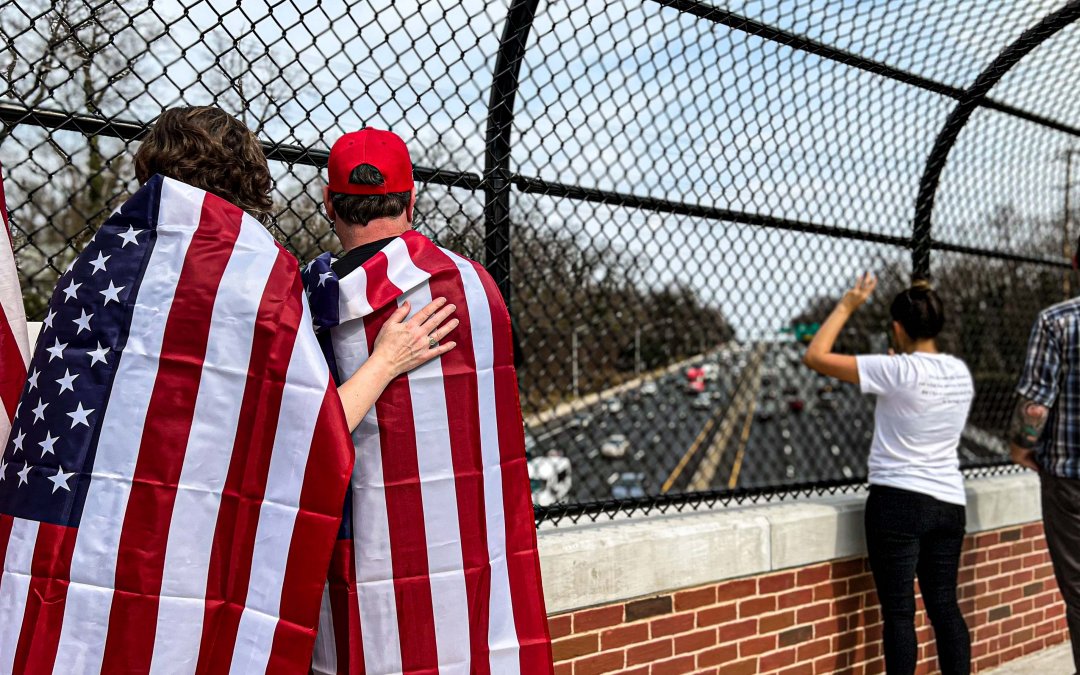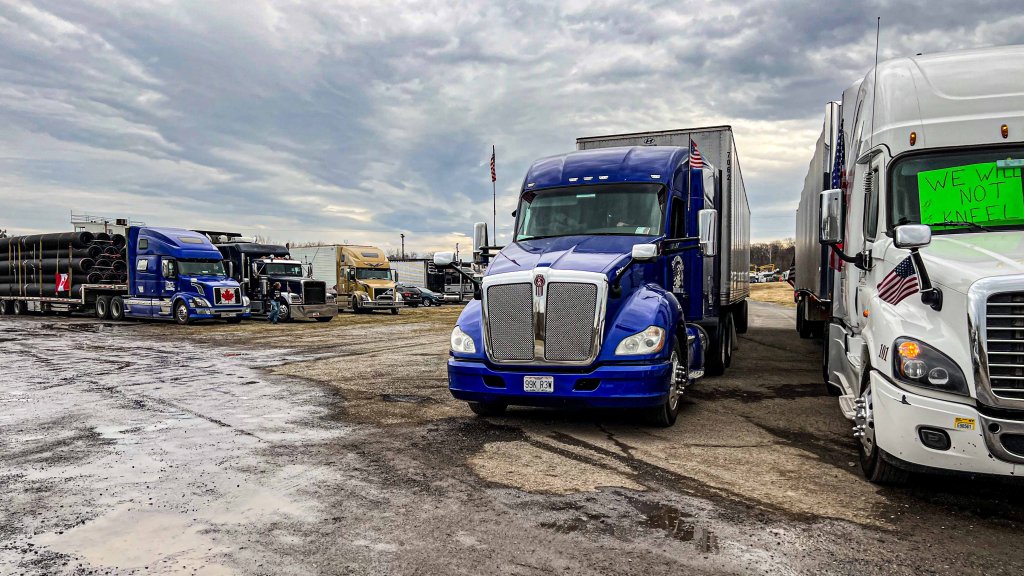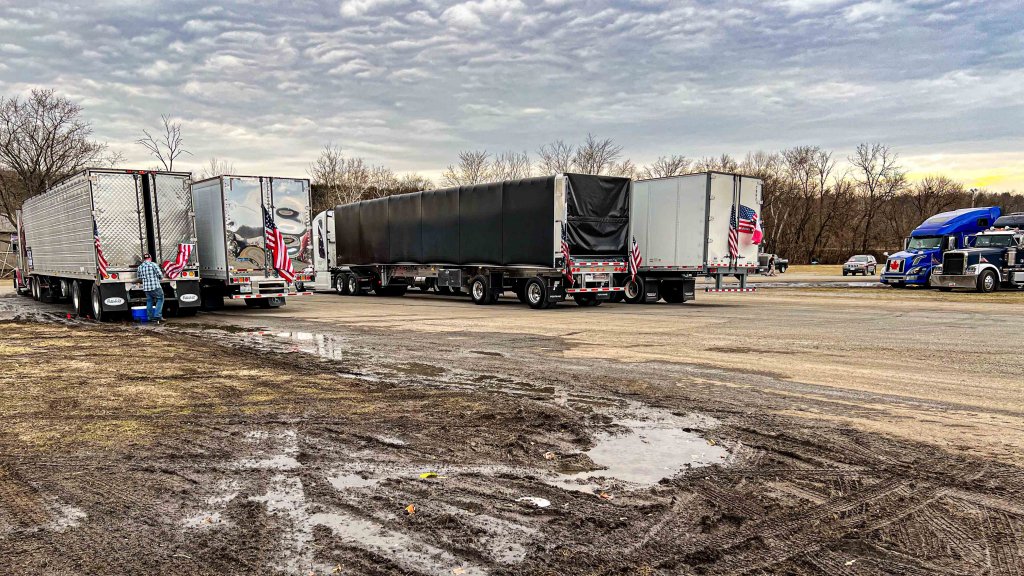WASHINGTON — The arrival of several truck convoys in the nation’s capital has, so far, failed to live up to the hype.
In February, anti-vaccine and anti-mask protestors used cars and trucks to blockade Ottawa and a nearby major shipping highway. Similar protests cropped up in countries like France and New Zealand.
But as American convoys in March converged on the DMV, or how locals refer to the District of Columbia, Maryland and Virginia, protest action has so far failed to live up to promises by organizers. Permits had to be adjusted. Events were delayed or canceled. Some convoys disbanded altogether.
By the time protestors arrived, most state-level mask and vaccine mandates had been lifted in stores and restaurants, including in D.C.
Here’s what it looked like on the ground.
WASHINGTON, D.C. – March 1, 2022
The first action was scheduled for noon on March 1, hours before President Biden’s State of the Union Address.
Organizer Kyle Sefcik, a former MMA fighter and current Maryland gubernatorial candidate, revised permits for the “Stage of Freedom” event on the National Mall near the Washington Monument down to less than 500 attendees, from 3,000. No trucks arrived.
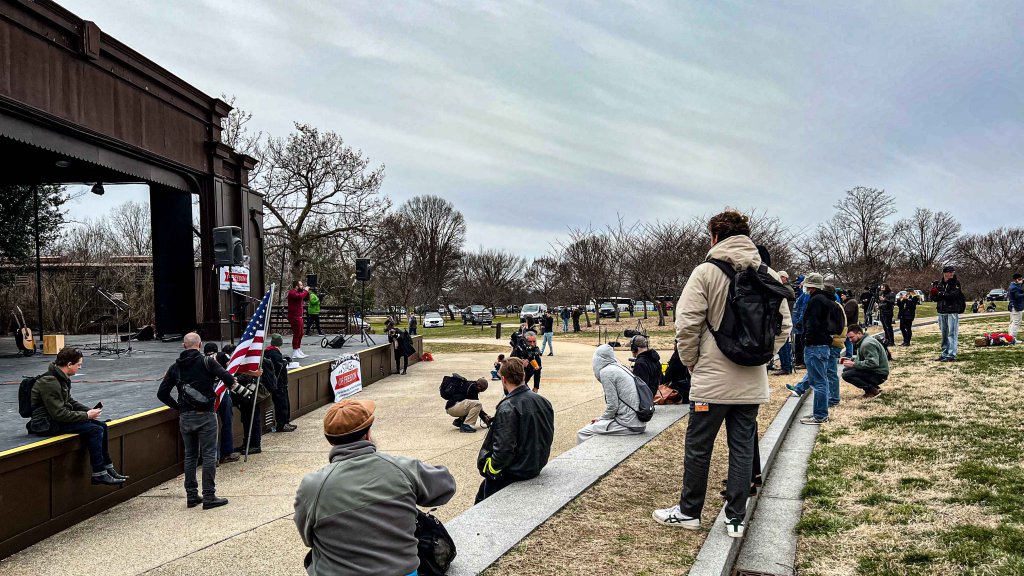
The Stage of Freedom event at the Sylvan Theater was poorly attended. Speaker and organizer Kyle Sefcik said he was disappointed and lost money on the event. (Zack Miller/MNS)
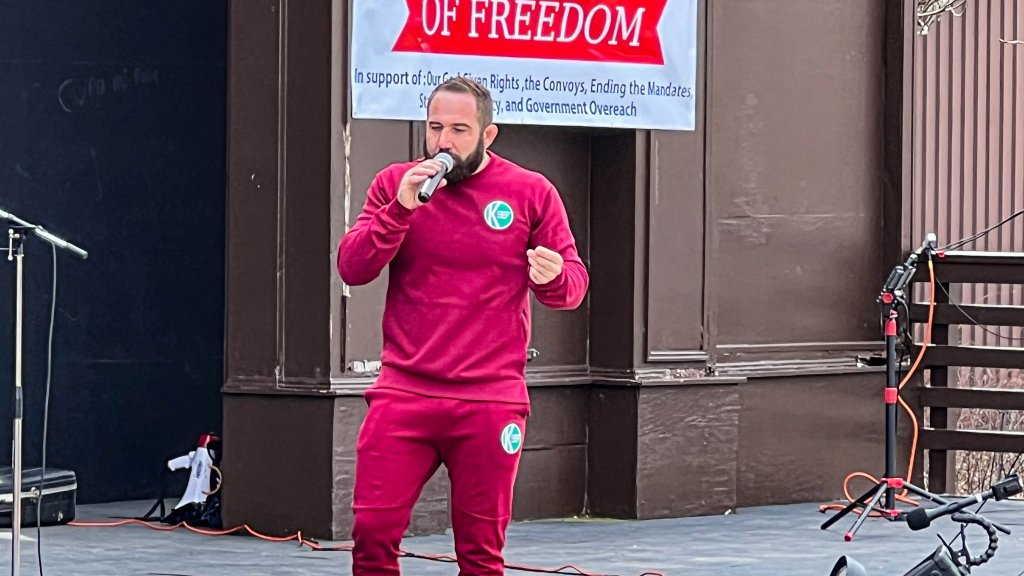
Organizer and former MMA fighter Kyle Sefcik, wearing a monogrammed “KSEF” sweatsuit. Sefcik said he moved multiple times to avoid mask and vaccine mandates. (Zack Miller/MNS)

Reporters nearly outnumbered protestors at the pre-State of the Union event. “I needed these cameras,” Sefcik said. He added, “I just wanna be straight up from the start. It didn’t matter if one person showed up or a million people showed up because of these cameras.” (Zack Miller/MNS)
WASHINGTON — March 5, 2022
Organizers announced plans to send a contingent of trucks to the White House on Saturday while others slowed down traffic on the Beltway. Those plans were scrapped Saturday morning in favor of a rally in Hagerstown, Maryland.
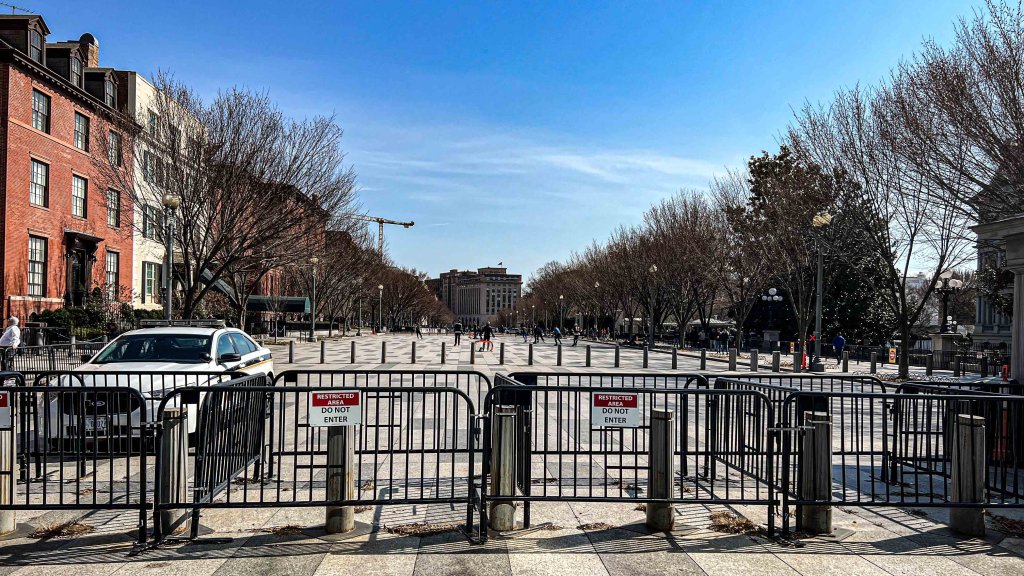
The 1600 block of Pennsylvania Ave., where the White House is located. Despite false reports of military blockades, the street is protected as usual by crowd control barriers and retractable beams. (Zack Miller/MNS)
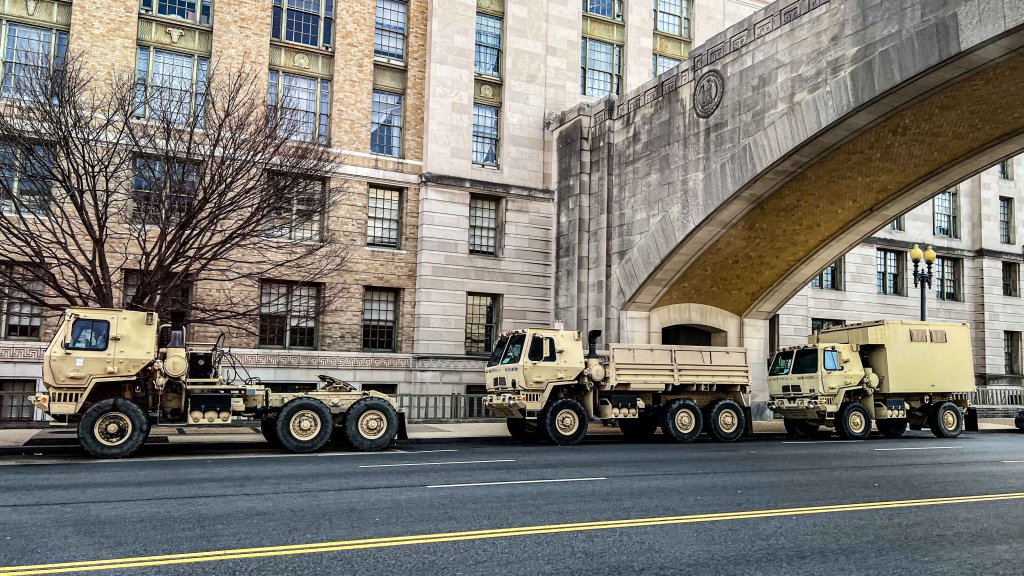
Military vehicles stationed several blocks south of the White House, near the U.S. Department of Agriculture. The National Guard placed forces on standby, but did not blockade highway exits as some social media users suggested. (Zack Miller/MNS)
BETHESDA, MARYLAND — March 6, 2022
Protestors drove nearly 70 miles Sunday from Hagerstown to the D.C. “Beltway,” a 64-mile highway which circles, but only briefly enters, the District.
Protestors circled the Beltway once or twice before returning to Hagerstown. Some traveled the minimum legal speed of 45 miles per hour to disrupt traffic.
Supporters gathered on highway overpasses with flags and signs in support of the truckers and against President Biden, the federal government and COVID-19 related mandates.

Supporters gather on a highway overpass in Bethesda overlooking the Beltway to cheer on anti-mandate protestors. (Zack Miller/MNS)
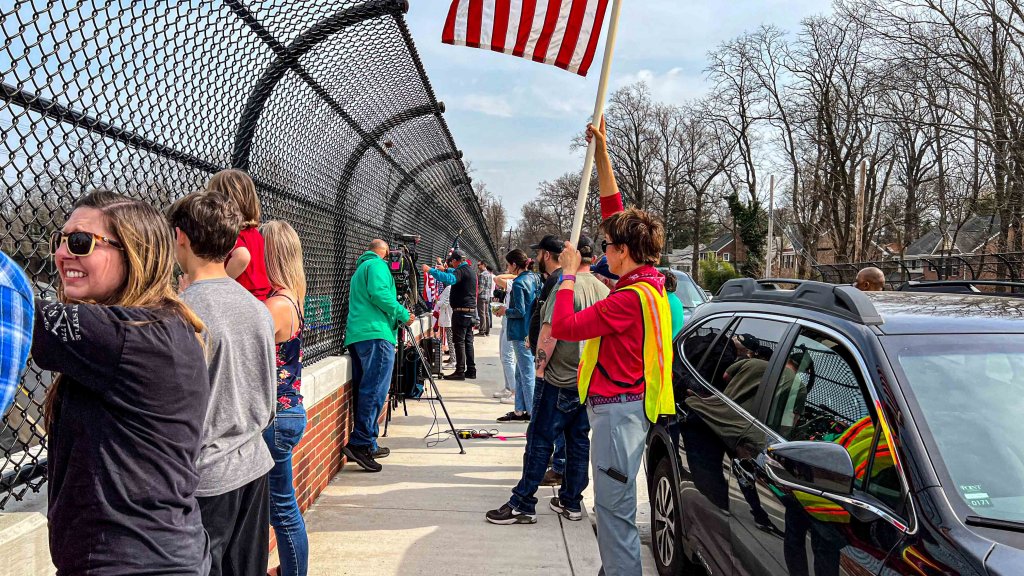
A larger group of supporters gather on a highway overpass in Bethesda further south. Most are excited, though some express confusion at changing plans from convoy organizers. (Zack Miller/MNS)
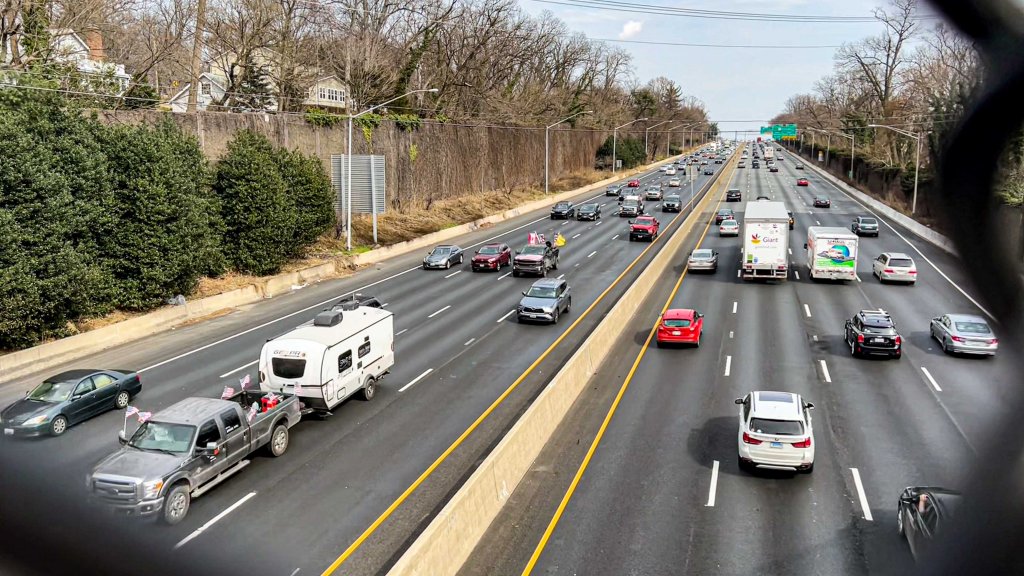
Cars pass by on Highway 495, also known as the Beltway. Spread thin over 64 miles of highway, the convoy’s estimated 1,000 vehicles did not lead to meaningful congestion Sunday. (Zack Miller/MNS)
HAGERSTOWN, MARYLAND — March 6, 2022
After circling the beltway, protestors in cars and trucks returned to Hagerstown for food, gas and rest.
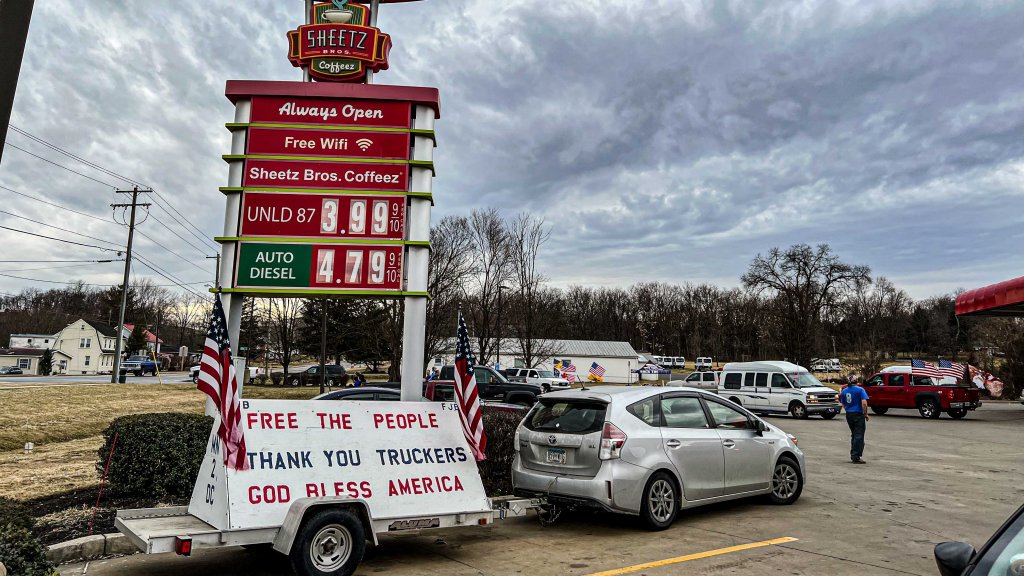
Protestors park and line up for gas at a gas station just a mile from the Hagerstown Speedway, the rallying point. A bit of bad timing: gas prices were on the rise for the cross-country convoy. (Zack Miller/MNS)
A mile away, at the Hagerstown Speedway racetrack, trucks and cars parked for the night. Self-described security personnel barred press from entering, citing threats against organizers.
Here’s what it looked like on the inside.

